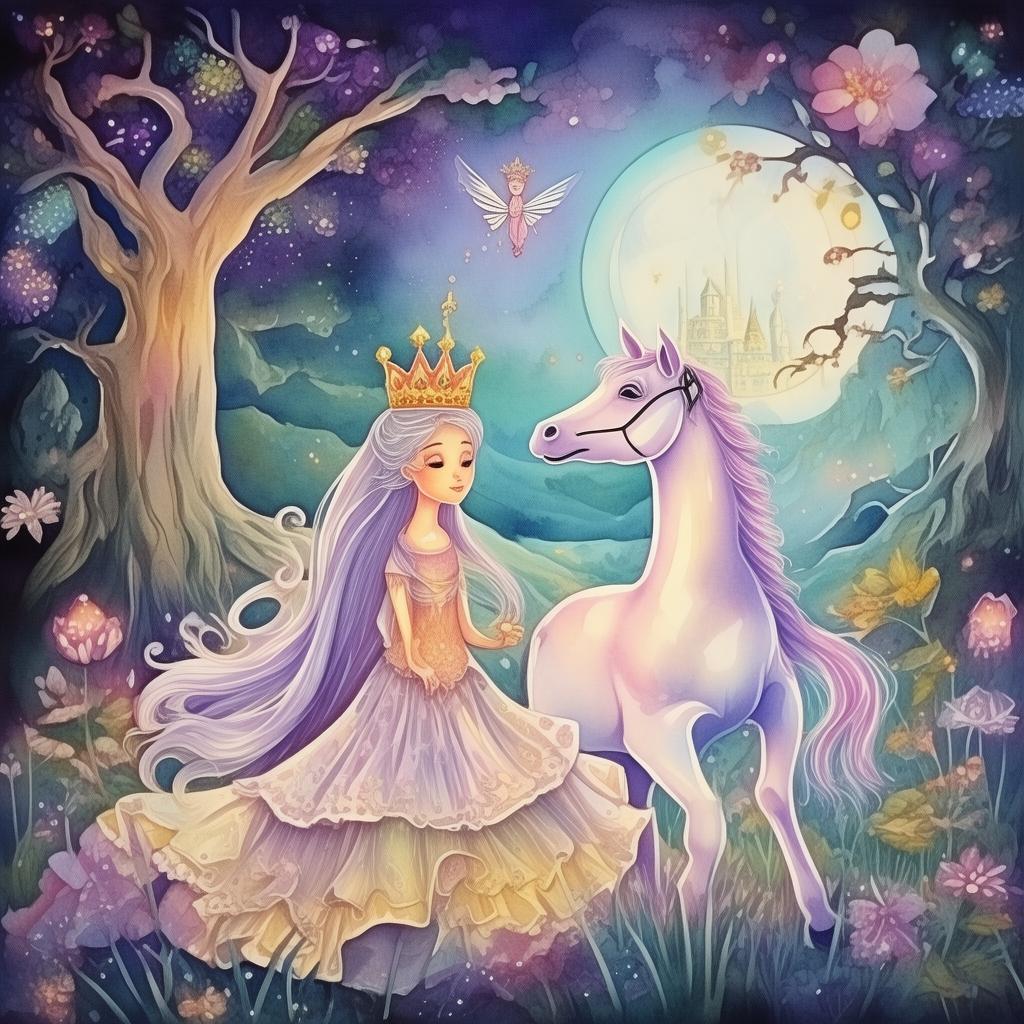Enchanted Window: The Rapunzel's Renaissance Revolt
In the heart of the ancient kingdom, there stood a magnificent tower, veiled in mist and shadow. It was the home of Rapunzel, a girl born with hair as long as the longest river and eyes that held the wisdom of the stars. The tower was a sanctuary, a place where Rapunzel had spent her days in contemplation and silence, her only company the whispers of the wind that danced through the window.
The kingdom, however, was a place of great change. The Renaissance was upon them, a time of enlightenment and awakening, where the mind was free to question and the spirit to soar. But Rapunzel was unaware of this; her world was confined to the walls of her tower, a world of her own making, or so she thought.
The tower was the creation of her mother, who was told by a witch that she could never bear a child unless she ate of Rapunzel's hair. The witch promised Rapunzel in return that she would remain eternally beautiful and young. Thus, Rapunzel's hair became the key to her mother's youth, and she was kept prisoner in the tower.
Years passed, and the Renaissance spirit reached the tower. The air grew thick with the scent of new ideas, of freedom, and of the pursuit of knowledge. Rapunzel, though confined, could feel it, a subtle stir in the air that suggested a world beyond the walls of her tower.

One day, a man named Hansel climbed the tower, driven by curiosity and a sense of adventure. He had heard of Rapunzel, of her hair that reached the heavens, and he sought her out. When he found her, she was a girl of great intellect and beauty, her hair cascading like a waterfall down the stone walls of the tower.
Hansel, seeing the spark of curiosity in Rapunzel's eyes, began to tell her of the world outside, of the Renaissance, of the ideas that were sweeping through the kingdom. Rapunzel listened, her heart alight with wonder. She had always felt the confines of her tower, the weight of the witch's curse, but Hansel's words gave her hope.
As the days turned into weeks, Rapunzel found herself drawn to the stories Hansel told. She began to see the tower not as her prison, but as a place where she could begin to understand the world that awaited her. Her hair, once a symbol of her imprisonment, now became a source of power, a means to break the witch's hold on her.
The witch, sensing the change in Rapunzel, became angry. She demanded that Rapunzel's hair be returned, but Rapunzel refused. She knew that her hair was a part of her, a part of her identity, and she would not surrender it to the witch.
The witch's curse began to take its toll. Rapunzel's hair, which had once reached the heavens, began to shrink. She feared that she was losing her power, that she was losing the ability to challenge the witch. But she also realized that the power was not in the hair itself, but in the courage to wield it.
With Hansel's help, Rapunzel began to formulate a plan. They would use her hair to climb the tower, to reach the top, and from there, she would confront the witch and break the curse. It was a dangerous plan, one that could cost her her life, but she was determined to be free.
The night of the confrontation, Rapunzel's hair grew again, long and flowing, a beacon of hope and strength. She and Hansel climbed the tower, step by step, their breaths coming in quick pants. When they reached the top, Rapunzel took a deep breath and began to climb.
The witch appeared, her eyes full of malice, her hands trembling with anger. She lunged at Rapunzel, but Rapunzel was ready. She used her hair to push back, to block the witch's advances. The fight was fierce, and for a moment, it seemed as if Rapunzel would lose.
But then, Rapunzel found her voice. She spoke of the Renaissance, of the power of knowledge, of the strength that comes from standing up against oppression. The witch, hearing her words, began to falter. She realized that she had been wrong, that she had been oppressing not only Rapunzel but also the kingdom.
In a moment of revelation, the witch dissolved into dust, her curse vanishing with her. Rapunzel, now free, descended from the tower, her hair flowing behind her like a banner of victory. She returned to the kingdom, where she shared her story, of the Renaissance, of her own transformation, and of the power of liberation.
The kingdom was changed by Rapunzel's tale. People began to see the world in new ways, to question the old ways of thinking, and to pursue knowledge and freedom. Rapunzel became a symbol of the Renaissance, a girl who had found her voice and used it to break the chains of oppression.
And so, Rapunzel's hair, once a symbol of her confinement, became a symbol of her liberation, a reminder that within each of us lies the power to change our own destiny.
✨ Original Statement ✨
All articles published on this website (including but not limited to text, images, videos, and other content) are original or authorized for reposting and are protected by relevant laws. Without the explicit written permission of this website, no individual or organization may copy, modify, repost, or use the content for commercial purposes.
If you need to quote or cooperate, please contact this site for authorization. We reserve the right to pursue legal responsibility for any unauthorized use.
Hereby declared.








